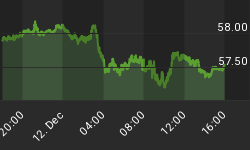After over a year of squeezing the consumer, the oil oligopoly has decided to allow the price of crude oil to drop even further than it has since peaking in late August (see our article from August entitled "Crude oil and the channel buster" for background).
Yes, the oligopoly has decided to give consumers a break as their controlled experiment with seeing how high they could artificially raise the oil price before the average American started to squill has been put on temporary hold to give consumers - and the economy - room to breathe.
One signal that the oil price squeeze experiment had run too far, near-term, was a story appearing in the Associated Press news wire last week. It was headlined "Fretting over fertilizer" and described worries that as the cost of oil and natural gas climbs, so does the price for fertilizers that are produced from petroleum feedstocks. As a former reporter covering the ag-chem industry, I know firsthand how important the tie-in between fuels and fertilizers can be. (In the '90s it was a case of low fuel and fertilizer prices being outweighed by low grain and oilseed prices. Today the situation has reversed as high fuel prices inhibit a farmer's ability to properly fertilize his fields. This will eventually put upward pressure on crop prices).
In a recent commentary by ag commentator Anthony Flaccavento, director of Appalachian Sustainable Development, he notes that despite the efficiency of modern U.S. agriculture (in terms of output per farmer), productivity in terms of energy efficiency is quite another story. To take one example, Flaccavento points out that nearly three-fourths of grain produced in the U.S. is fed to livestock. "Modern meat and dairy production has largely substituted oil for grass, by replacing pasture and hay with energy intensive grains," he writes.
He also points out that even as farmers have increased oil usage dramatically since the 1950s, even more petroleum-based energy is consumed when crops and livestock leave the farm during processing, packaging and distribution. Bottom line: the high oil and gas prices of the past year will have an impact on consumers in more ways than many have imagined.
On a related interest, the above observations tie in with our recent discussion about inflation and Pavlovian inhibition techniques used by the monetary and economic regulators to shape and control consumer behavior (refer to my recent article "Inflation and inhibition" for background).
The good news is that natural gas and oil prices will shortly come down from their presently high levels to seek at least mildly lower levels. The bad news is this may only be temporary adjustment. Even by dropping back a few dollars, these fuel prices are still quite high by historical standards and will likely continue to exert pressure on a wide array of consumer staples in 2006. As we all know from experience, prices at the retail level are always a lot slower to come down than are actual commodity prices.

The chart for crude oil shows that oil has violated both its 30-day and 60-day dominant interim trend lines, a signal that a larger correction is underway which should carry oil to a lower low than the one made in October.
















